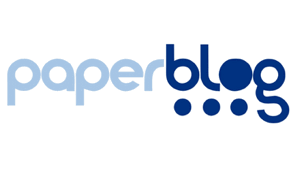Dies Programm zeigt die 100 am meisten verwendeten englischen Wörte an. Diese 100 Wörter machen die Hälfte alles geschriebenen in Englisch aus. Allein die ersten 25 Wörter aus der Liste, sind schon ein Drittel alles gedruckten in englisch.
Hier C++ Programm mit der Wortliste und einen Fortschrittsbalken, unter Verwendung der U8gLib.
//
// Dies Programm zeigt die 100 am meisten verwendeten englischen Wörte an.
// Diese 100 Wörter machen die Hälfte alles geschriebenen in Englisch aus.
// Allein die ersten 25 Wörter aus der Liste,
// sind schon ein Drittel alles gedruckten in englisch.
//
// (c) 2017 by Thomas Wenzlaff http://www.wenzlaff.info Version 1.0
//
#include <Arduino.h>
#include "U8glib.h"
U8GLIB_SSD1306_128X64 u8g(U8G_I2C_OPT_NONE | U8G_I2C_OPT_DEV_0);
// These are the most common words in English, ranked in frequency order. The first 25 make up
// about a third of all printed material. The first 100 make up about half of all written material, and
// the first 300 make up about 65 percent of all written material.
//
// Source: The Reading Teacher’s Book of Lists, Fourth Edition, © 2000 by Prentice Hall
// Authors: Fry, Kress & Fountoukidis
const char *woerter[] = { "the", "of", "and", "a", "to", "in", "is", "you", "that",
"it", "he", "was", "for", "on", "are", "as", "with", "his", "they", "I",
"at", "be", "this", "have", "from", "or", "one", "had", "by", "word",
"but", "not", "what", "all", "were", "we", "when", "your", "can",
"said", "there", "use", "an", "each", "which", "she", "do", "how",
"their", "if", "will", "up", "other", "about", "out", "many", "then",
"them", "these", "so", "some", "her", "would", "make", "like", "him",
"into", "time", "has", "look", "two", "more", "write", "go", "see",
"number", "no", "way", "could", "people", "my", "than", "first",
"water", "been", "call", "who", "oil", "its", "now", "find", "long",
"down", "day", "did", "get", "come", "made", "may", "part" };
const int MAX = 99;
int postition = 0;
void draw() {
u8g.setFont(u8g_font_osb18);
u8g.drawStr(30, 60, woerter[postition]);
u8g.setFont(u8g_font_tpssb);
u8g.drawFrame(0, 10, 128, 20);
u8g.drawBox(10, 15, postition, 10);
}
void setup() {
u8g.setFont(u8g_font_tpssb);
u8g.setColorIndex(1);
}
void loop() {
u8g.firstPage();
do {
draw();
} while (u8g.nextPage());
delay(500);
if (postition < MAX) {
postition++;
} else {
postition = 0;
}
}
Hier das 1 Minuten Video, mit der Ausgabe:
Ähnliche Artikel:
- Arduino Nano mit OLED Display „Don’t give up!“ Ansteuerung
- Das erste „Blink“ Programm für das Arduino Nano Board, es muss ja nicht immer „Hallo Welt“ sein.
- Arduino Nano Relais Ansteuerung (Relay test)

